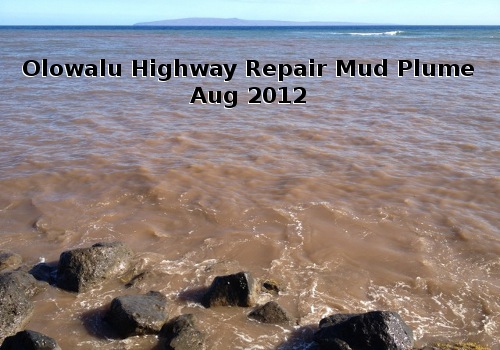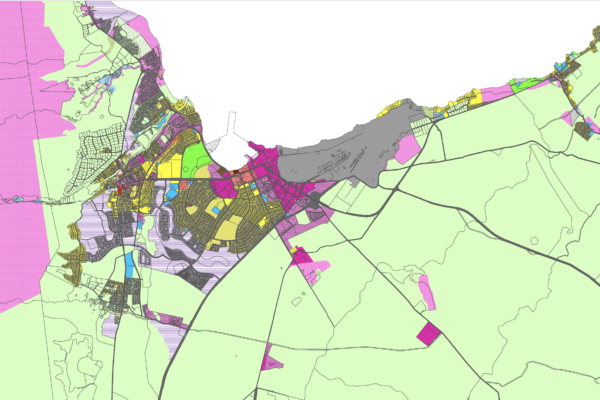State Highway Seawall Construction in Ukumehame Gets Exemption for Environmental Review
Silts fills offshore waters and heads for the reefs. Would proposed Olowalu development lead to same disturbing results?
August 9, 2012
To Whom it May Concern,
My name is Mark Deakos, I have been a Maui resident for the past 15 years and I live in Napili. I am a marine biologist and obtained my doctoral degree from the University of Hawaii studying the 330 manta rays that frequent the Olowalu reef. During the past 7 years I have made nearly 400 dives on the reef in front of Ukumehame Beach Park.
On May 19th, after being off-island for 6 weeks, I noticed construction was ongoing just south of Ukumehame beach park to armor the shoreline. After being off-island for another 6 weeks for work, I returned in early July to find a mud plume leaching out from the construction area. From July 10 to August 6, I conducted 19 research dives in this area and found the mud plume persisting the entire time. On one of my dives I was nearly half a mile offshore, 40 ft. below the surface, and the plume was so thick that I couldn’t see my hand in front of my face.
As you may or may not know, coral reefs require access to the sun (photosynthesis) to produce food but when coral is covered with silt, sand, or any type of sediment for extended periods of time, the corals cannot access the sunlight and die. This is what has happened in South Kihei, Maaelea, Honolua Bay, and other parts of West Maui. This is why it is critical to prevent any type of sedimentation from reaching the reefs.
After speaking with one of the contractors on site at Ukumehame, he advised me to call the EPA as they were doing the monitoring. Although concerned about the mud plume, the contractor said they were told not to worry too much about it since there was no live coral in this area (absolutely false). After speaking with Tara Owens (Coastal Hazards Specialist – UH Sea Grant) and Roland Asakura (EPA Clean Water Branch), I recently learned that this particular project, because it was designated under the tsunami disaster declaration by the mayor, the normally required environmental impact assessment, review processes, public input, and necessary permitting were waived.
In further discussions I have learned that the source of the plume is a natural clay layer that was underneath the sand that was removed is now exposed from the dredging. As wave action moves over this clay layer, it suspends the sediment creating the mud plume. With the shoreline permanently altered by the sea wall, and no more beach to cover the clay layer, the mud plume will continually be disturbed by the wave action, causing the mud to persist indefinitely, long after the construction is completed.
This is extremely disturbing as this mud plume will likely negatively impact on some of the most extensive, intact, tongue and groove, fringing reef habitat that we have left on Maui, will likely disturb one of the world’s few known manta ray cleaning and reproductive habitats, as well as disrupt one of Maui’s prime summer surf areas.
In case you were not aware, the economic value of our coral reefs in Hawaii were estimated at $10 billion per year with direct economic benefits of $364 million per year (Cesar and van Beukering, 2004), and more recently valued over $30 billion per year in a peer reviewed report from NOAA (Bishop et al., 2011). I am astonished at how we continue to destroy Hawaii’s economic lifeline with such inadequate, coastal management practices.
I truly hope there is a way to correct the persistent mud plume at Ukumehame and I hope this also serves as a wake up call to what is likely to happen with the Olowalu Town development, just on a much, much larger scale.
Regards,
Mark Deakos





Comment(1)-
Kurt Wollenhaupt says
August 17, 2012 at 6:22 pmI believe that the GOVERNOR of Hawaii is the one to issue emergency declarations for these matters, NOT THE MAYOR of Maui. Please review.